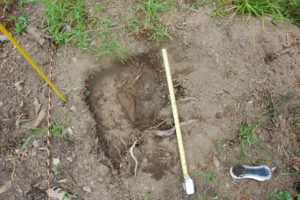Where does the creative process start for the arborist? Perhaps with a throw line, a shovel or the stroke of a round file. The art of arboriculture is fleeting, somewhat obscured through the scope of time. The chain will dull. A rope will wear, a few years and pruning cuts callous over. A client calls someone else. Then it is true, we move through trees only for a moment when viewed through the scope of time. But the things revealed can last many lifetimes.
Proper arboriculture means growth, support and preservation of not just healthy trees, but a healthy environment too. It can be the environment of our community where we work, our business or our family environment too. By keeping trees healthy, we are forced to move against gravity and breath deep the clean air of the crown. The simple words of Alex Shigo seem more relevant all the time: touch trees. This basic notion-the soul of arboriculture-leads to unthinkable adventures, mishaps and lessons that we thought we’d already learned. Through this interaction we can then touch countless hearts of people too, through our work as arborists. After all, it is the blending of art and science, fact and fiction, where we find the boundaries and freedom of true expression.
The art of arboriculture is creating beauty through conversation. Everyday there is a new challenge before us to question the foundation of our own conceptions and perceptions and ethics, and perhaps someone else’s as well. We are listening to the music of the trees, we are dancing amongst the wild woods of our cities and towns. David George Haskell’s words strike a chord deep in my heart, the notion of “…life’s irrepressible urge to turn sunlight into song,” (From The Song of Trees). In this light, the arborist surely does dance on sunshine.
Like all great art, arboriculture has rules and standards too. We are judged and measured by our processes-by the details we choose to leave in and out of our lives-and our respect for those processes. I think it is through our standards that we define our own unique style. In this sense, it isn’t just the work we do, but the legacy and standards we leave behind that makes this art wonderful. To know that what we do affects many lives: our families and our colleagues and and our clients and our communities. Responsibility can grow exponentially when considering the network around us. Then this legacy is like a ripple on water, real energy infinitely moving outward.
Good art-the best art-has a purpose. To inspire, to change, to grow; great art is a challenge. And through that challenge we find freedom. The freedom to move creatively through the landscape, to learn more about ourselves and our science. It’s the arborist’s responsibility to learn this language of the trees and interpret it for others. It is an ongoing conversation that challenges us to listen and explore.





Leave a Reply
Your email is safe with us.